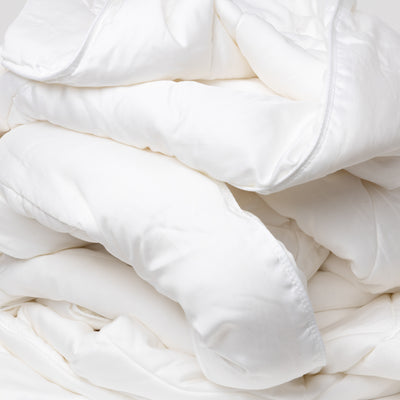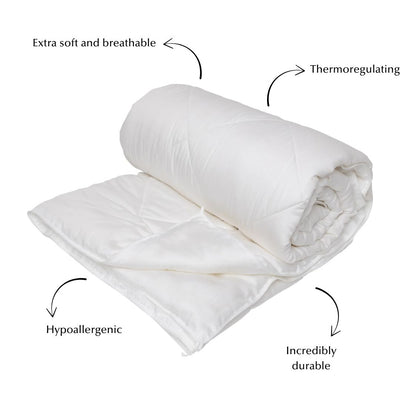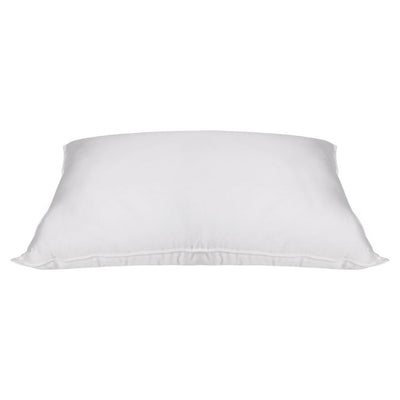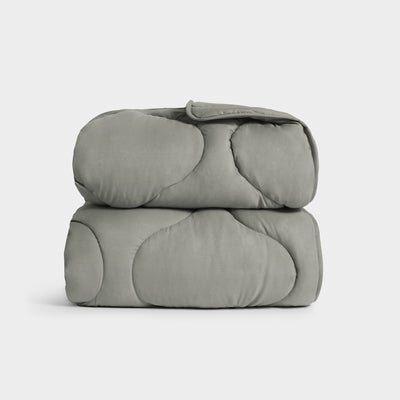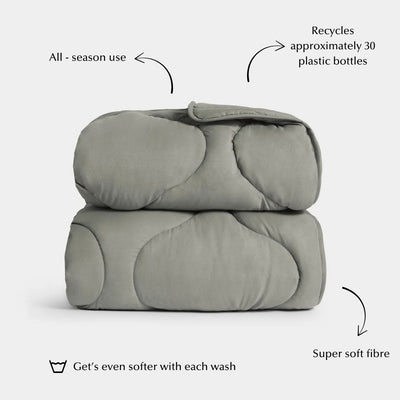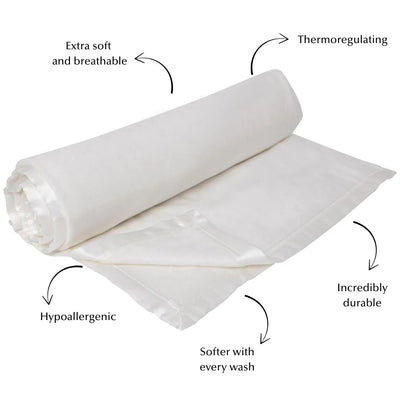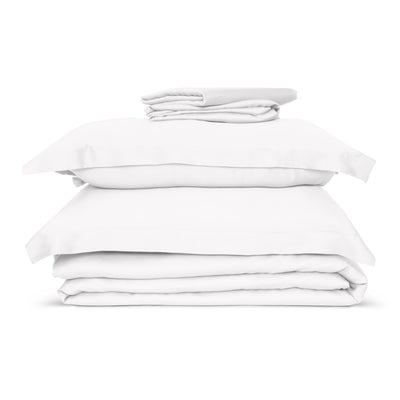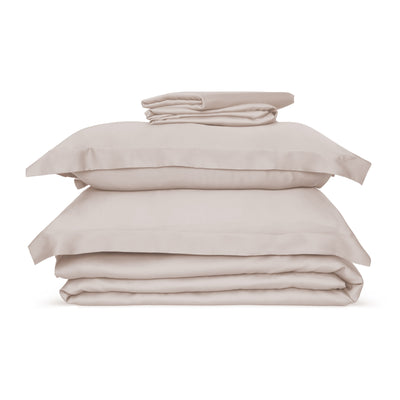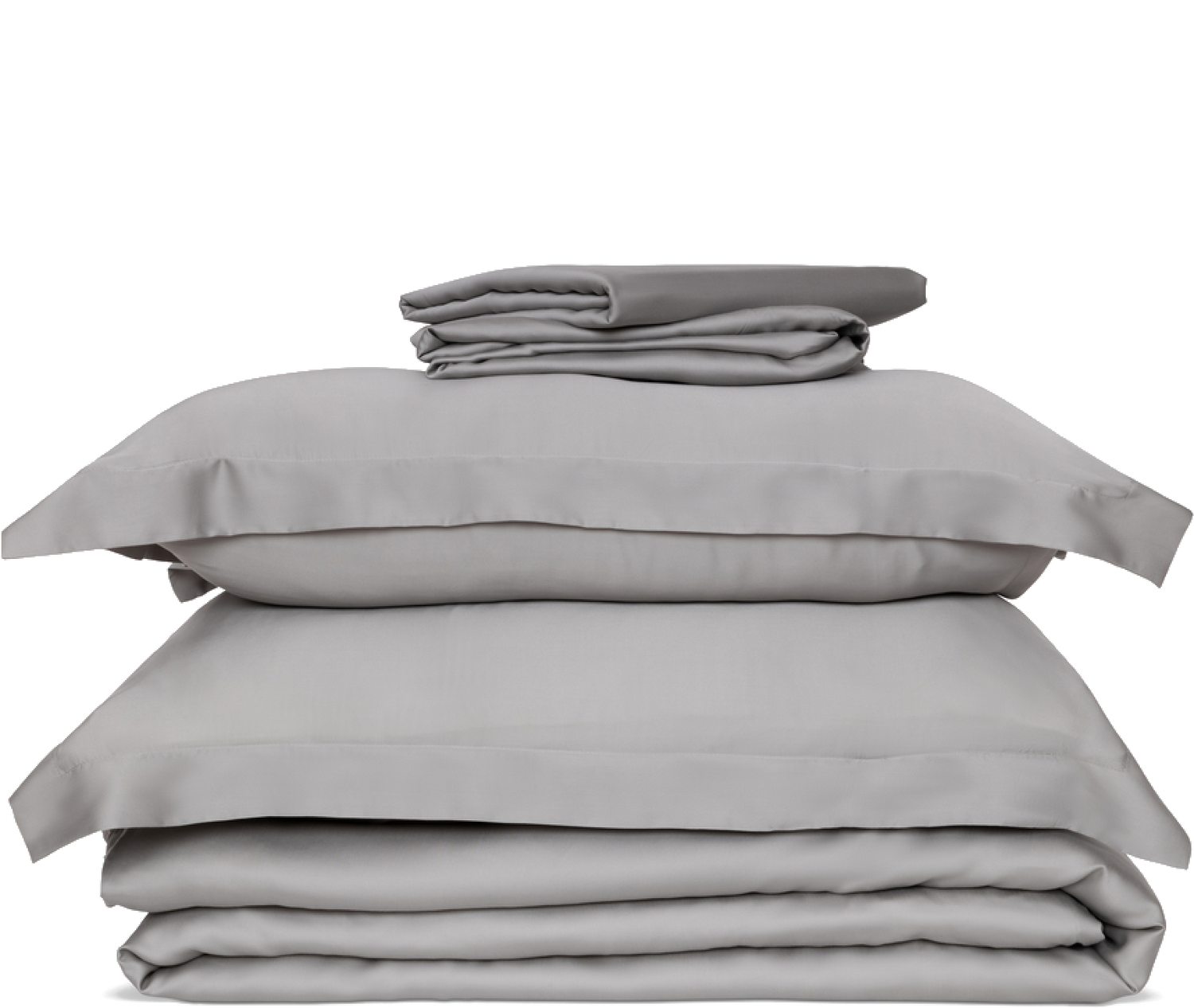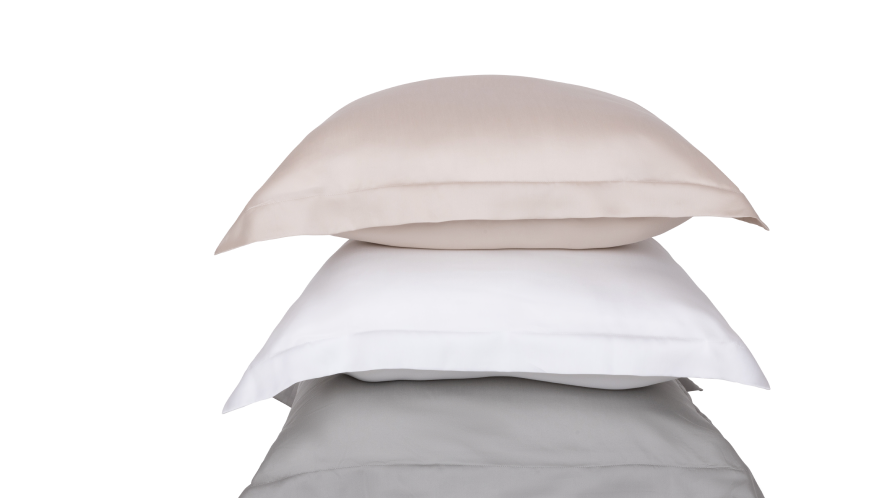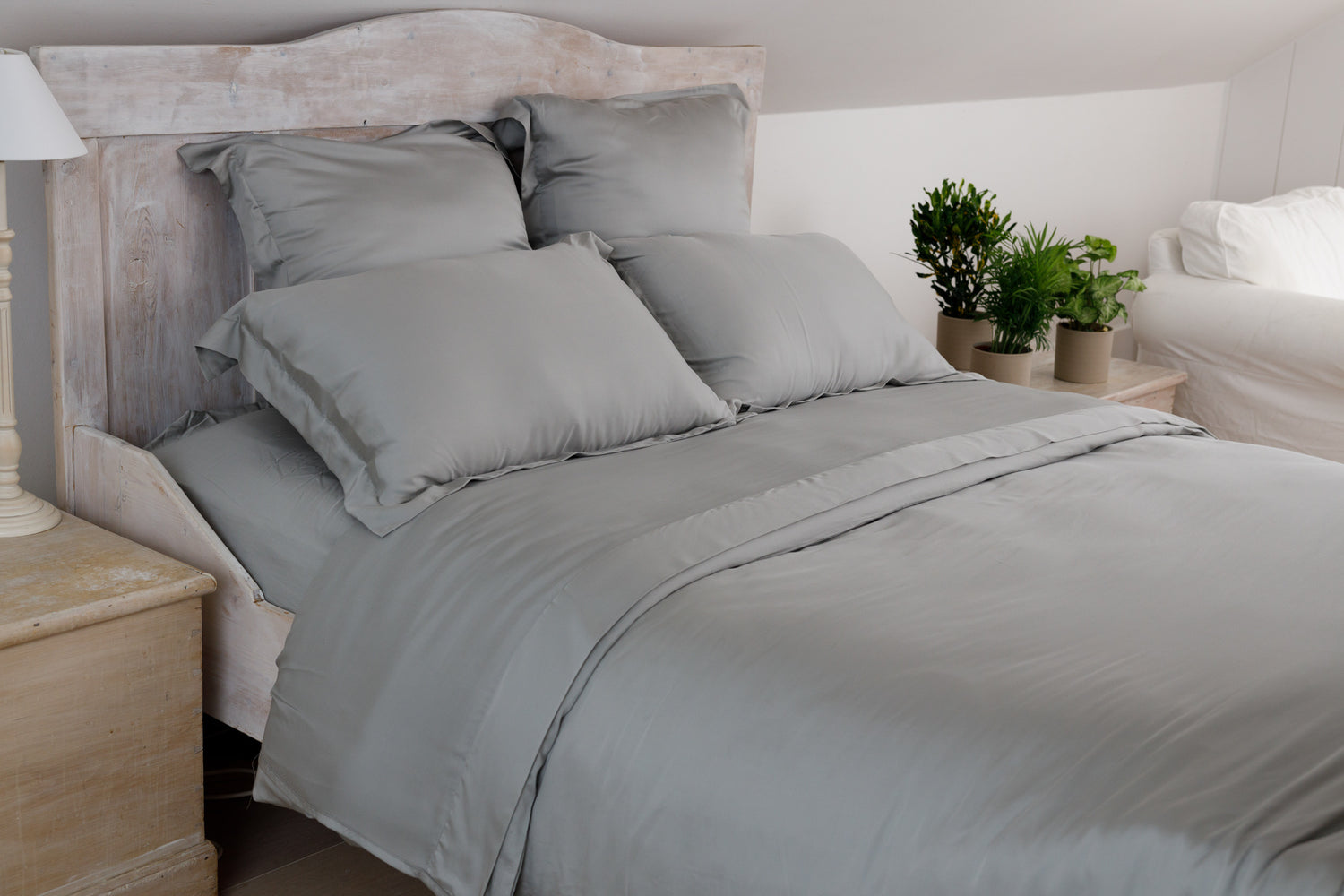Whether you’re cosying up on a winter’s weekend or ditching the duvet for something thinner during the hotter months, blankets are a versatile addition to any home and provide everything from comfort to gorgeous style. But how do you go about choosing the perfect size blankets?
To give you a helping hand, we’ve created the ultimate blanket size guide to offer a valuable overview of the different considerations to make, how a bedding blanket differs from a throw, the benefits of a big blanket, and the other materials you can choose from.
How to choose the right size blanket
When choosing the right size blanket, you’ll need to consider a few key factors: the size of your furniture, the purpose of the blanket, your height, and the blanket style. Once you’ve addressed each consideration, you’ll have a good idea of your perfect blanket size!
1. The size of your furniture
Your furniture’s measurements are perhaps the main thing to consider when determining the size of the blanket you invest in.
For instance, a single bed will naturally require a smaller blanket than a double, queen, or even king size, while the size of throws you hang over your armchair will likely need to be smaller still (we’ve gone into more detail about throw blankets below).
As a rule of thumb, the typical UK blanket sizes are:
|
Bed size |
Blanket size (inches) |
Blanket size in cm |
|
Cot |
45 x 60 |
114 x 152 |
|
Single |
65 x 90 |
165 x 228 |
|
Double |
85 x 90 |
215 x 228 |
|
Queen |
90 x 90 |
228 x 228 |
|
King |
90 x 108 |
228 x 274 |
2. Blanket purpose
What you plan to do with your blanket will go some way towards determining the size you need. For example, if the primary purpose is style or aesthetic, it may not need to be as big as if you’re planning on sleeping with a blanket at night for extra warmth.
3. Your height
This one may sound simple, but it’s crucial to remember: if you’re on the smaller or taller end, you may want to size up or down when buying new blankets. It’s no good buying a smaller blanket for your single bed if it’s not going to cover your feet.
Although the standard sizes in our table above are suitable for most people, it isn’t an exact science, so you should consider your circumstances when weighing up your options.
4. Blanket design
The final consideration when choosing between different size blankets is the style and design. For example, if the colours and textures are quite bold, you may want to choose a slightly smaller blanket, so as not to overwhelm your room. In contrast, if your chosen fabric is subtle and sleek, having a large blanket is unlikely to disrupt your aesthetic.
What size throw blanket should I buy?
We’ve looked at the different factors to bear in mind when comparing bedding blanket sizes, but is picking out a throw blanket any different? Well, before we run through the similarities and differences, we’ll look at what a throw blanket is.
What is a throw blanket?
A throw blanket, often referred to as simply a throw, is a decorative textile used to accentuate and complement your furniture, as well as provide extra comfort and warmth. They’re often added to breathe texture and personality to your space, with the main differences between a throw and regular blanket typically being their purpose and their setting in the home.
As highlighted, throw blankets are typically used for style and comfort. Whether your home follows a contemporary or classic aesthetic, a chic throw can add the finishing touches to any environment, guaranteeing sleek decoration and statement style. Combine this with warm and cosy practicality, and you’ve the perfect, snuggly accompaniment to any weekend movie marathon.
An important distinction between throws and regular blankets is where you’ll find them in the home. While bedroom blankets are often used to add layering while you sleep, a throw is as much at home on your bed as it is on the living room sofa or conservatory armchair. The most important thing is that you’re comfortable, so place your throw wherever you please.
Choosing a throw size
Generally speaking, bedding blankets are designed to match your bed’s dimensions, whether you sleep on a single, double, or king size bed. After all, they’re typically there to add an extra layer of warmth and comfort at night.
However, this isn’t necessary for throws. Instead, the standard throw size is a little smaller, coming in at just 50” x 60” (although large and extra-large options are widely available).
Do I need a throw blanket?
Of course, a throw blanket could be seen as somewhat of a luxury, considering one of its main benefits is the way it effortlessly enhances your home’s aesthetic. But while style plays a huge part in choosing a throw, there are a couple of other key practical advantages:
- Versatility: Unlike traditional bedding blankets, throws are a versatile solution you can use throughout your home. You can cosy up with a throw blanket on the sofa during the day, drape it over your armchair in the evening, and use it for extra layering in bed at night.
- Warmth: It can’t be overlooked that a throw is an excellent source of warmth during the chillier months. They may typically be a little smaller than traditional bedding blankets, but you can grab it for instant comfort all the same.
What are the benefits of large blankets?
If you’re deliberating between different blanket sizes, you may be wondering what the uses of big blankets actually are, or whether it’ll just end up bundled at the end of your bed.
Fortunately, large blankets are much more versatile than smaller alternatives, with a few uses that could go some way towards helping you make up your mind:
- Bring your old furniture to life: Big blankets can be used to breathe new life into your old bed and bedding, with stylish patterns providing personality and giving your space a whole new look.
- Enjoy comfortable warmth: Perhaps the primary function of any blanket is to provide warmth, which is exactly what you get when you go oversized. Not only do they offer great insulation, but if you’re on your own, you can completely wrap yourself up in the fabric for extra relaxation.
- Provide protection to your bedding: Larger blankets can help to protect your other bedding and furniture from spills, stains, and pet hair and dander. Simply wash your blanket as and when it’s affected, rather than having to wash your duvet cover each time. Not only does this save you the hassle of remaking your bed, but it also extends the lifespan of your duvet.
Of course, it goes without saying that you can also choose to drape your big blanket over the end of your bed or atop your duvet for an extra layer, to provide extra cosy comfort during the night!
What are the different types of blanket?
Hopefully, you’ll now have a clearer idea of the blanket size that best suits your space, so the only decision left to make is the material. So, to make things as easy as possible, we’ve outlined the qualities and benefits of some of the most popular blanket fabrics.
Cotton
Cotton blankets have become a popular choice, thanks to their durability, low-maintenance, and comfort. But not only that; high-quality cotton is completely breathable - keeping you cool in summer and warm in winter - and gets softer after each wash, making them a great long-term sleeping solution.
Wool
Wool is famously soft and warm, making it a popular pick in the cooler months. It also offers moisture-wicking and hypoallergenic properties, though it is often regarded as being a little rough-textured.
Down
Down refers to duck or goose feathers, with this type of blanket having a padded layer for extra warmth and fluffiness. Down blankets are generally considered high-quality, and provide extreme insulation, but are widely regarded as being somewhat unethical due to the way they’re manufactured.
Down alternative
Down alternative blankets provide a similar softness to duck or goose feathers, only the stuffing is often a synthetic material instead. While down alternatives aren’t typically as warm as the real thing, they’re still reasonably well-insulated and a more ethical pick.
Silk
Silk has long been regarded as a luxury material, so enhance your home with soft and elegant blankets that keep you comfortable, whatever the temperature. Lightweight and chic, silk is a breathable fabric, but, like down, has taken criticism for its unethical manufacturing processes.
Eucalyptus silk
Finally, eucalyptus silk offers all the luxurious benefits of silk without the associated cruelty. Incredibly soft, naturally hypoallergenic, and environmentally friendly, eucalyptus silk blankets are also lightweight, temperature regulating, and hygienic – making this fabric the perfect addition to any evening or weekend spent in bed.
Hopefully, you’re now a little more familiar with the things to consider before buying a new blanket, whether that be a bedding layer or stylish throw. For even more useful articles like this, check out the latest from our sleep experts over on the Ethical Bedding blog.

